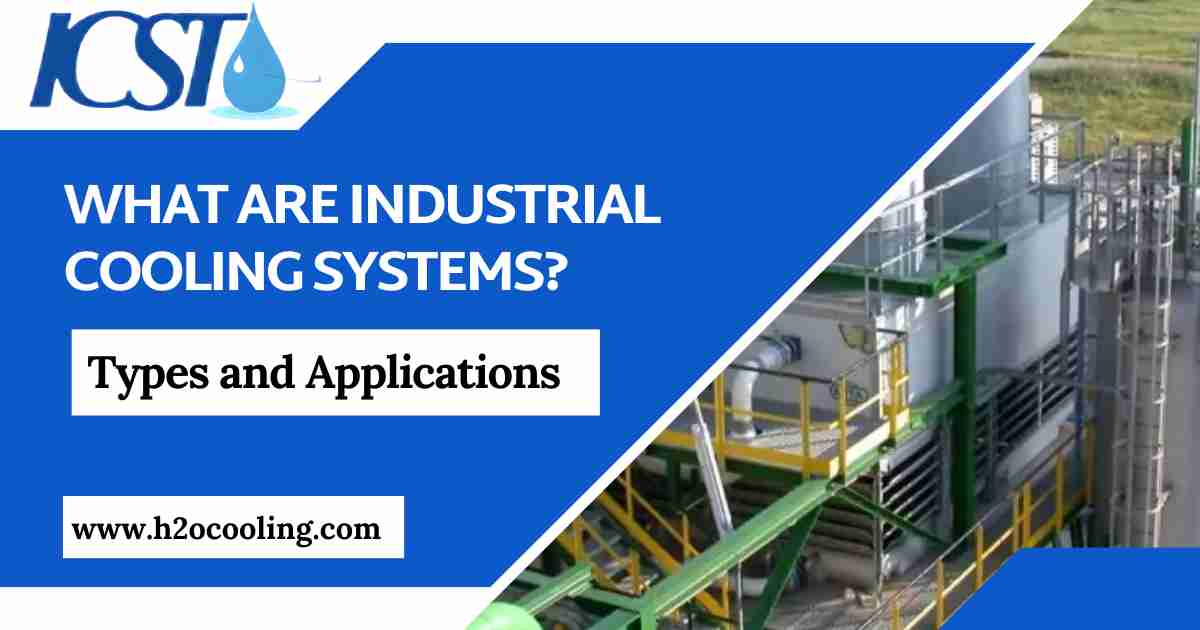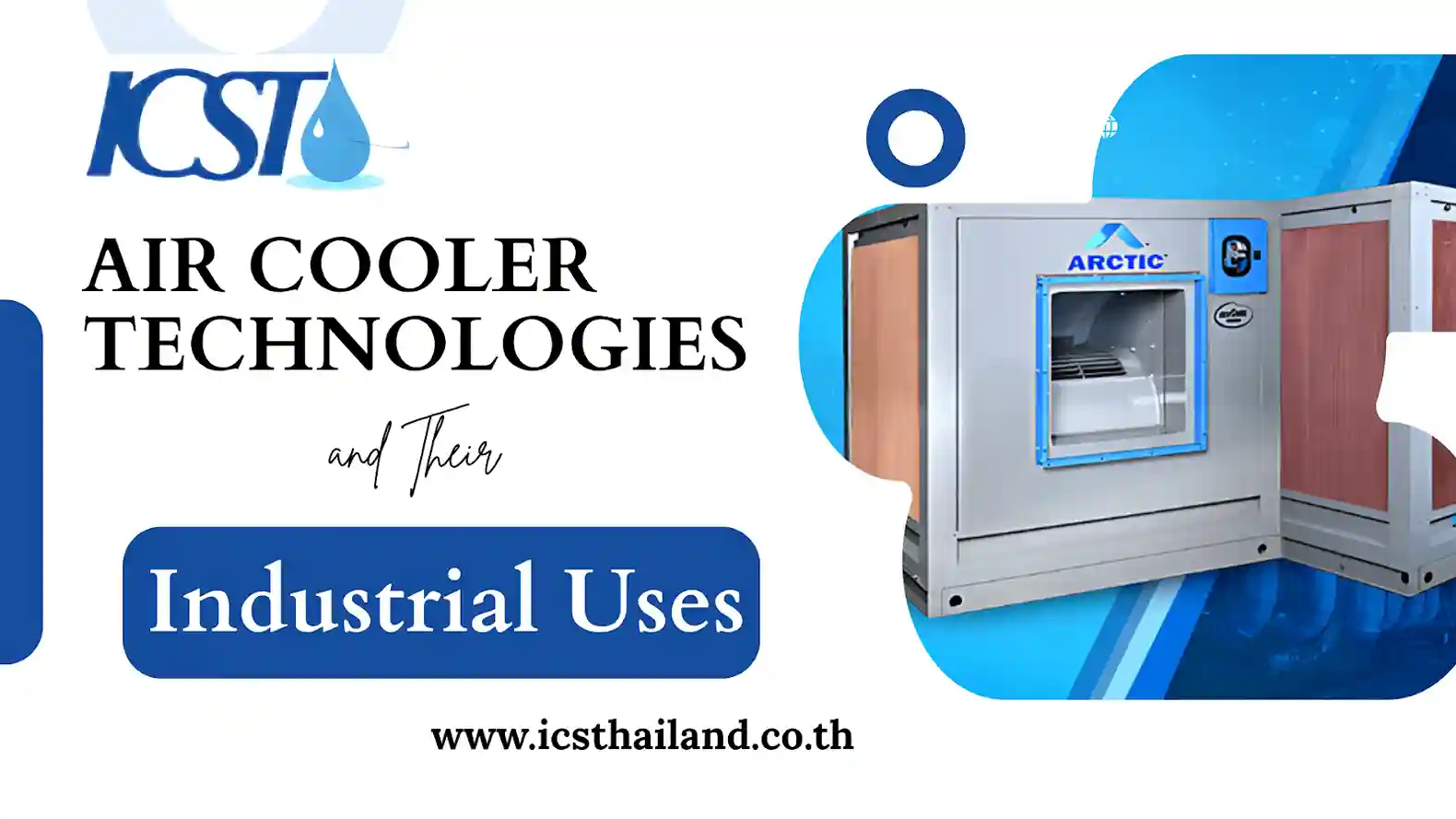Industrial cooling systems are the backbone of industries like power plants and data centers. Essential for maintaining equipment efficiency, ensuring product quality, and upholding safety, these systems are the backbone of modern operations. Whether you’re an engineer, facility manager, or industry professional, understanding the critical role of cooling systems can help optimize performance and reduce downtime.
If you’ve ever wondered how these systems work, the different types available, or how to select the right one for your facility, you’ve come to the right place. We’ll explore the ins and outs of industrial cooling systems, their applications, maintenance practices, and even emerging technologies driving sustainability.
Table of Contents
ToggleWhat Are Industrial Cooling Systems?
At their core, industrial cooling systems are designed to manage heat produced by equipment and industrial processes, ensuring temperature levels stay within safe limits. This is essential for several reasons, including protecting machinery, maintaining product quality, and ensuring worker safety.
Unlike commercial or residential cooling systems, industrial cooling is built for heavy-duty purposes. Where commercial AC might cool a single office building, industrial systems might handle the heat generated by an entire factory or data center.
Why Are Cooling Systems Necessary?
Excess heat poses a major risk to machinery and equipment, potentially leading to malfunctions, damage to sensitive components, or even complete production halts. Here’s why cooling systems are essential for your equipment:
- Prevents Malfunctions: Overheating can cause unexpected machinery failures, disrupting workflows and increasing downtime. Cooling systems help maintain stable operating temperatures.
- Protects Sensitive Equipment: Delicate components, such as electronics and sensors, are highly sensitive to heat. Proper cooling safeguards these parts and extends their lifespan.
- Optimizes Performance: Equipment runs more efficiently and consistently when operating at ideal temperatures, improving overall productivity.
- Reduces Production Downtime: Cooling systems help avoid heat-related shutdowns, keeping production lines running smoothly and meeting deadlines.
Major Components of Industrial Cooling Systems
An industrial cooling system doesn’t rely on just one piece of equipment. It’s a symphony of components working together to control heat effectively. Here’s a breakdown of the key players:
1. Compressors and Condensers
Compressors increase the refrigerant’s pressure and temperature, while condensers release heat to cool the refrigerant. Regular maintenance of compressors and condensers is critical to ensure effective operation and avoid downtime.
2. Cooling Towers
Cooling towers facilitate the exchange of heat, using water or air to manage temperature levels in large-scale operations.
3. Heat Exchangers and Chillers
Heat exchangers transfer thermal energy, while chillers remove heat by cooling liquids used in various processes.
4. Pumps, Piping Systems, and Control Systems
These ensure the smooth flow of refrigerants and provide precise control over the entire cooling process.
5. Expansion Valves and Evaporators
Expansion valves regulate refrigerant flow, while evaporators absorb heat to cool the industrial process.
Each of these components plays a vital role in ensuring the cooling system performs optimally.
Main Types of Industrial Cooling Systems
There are several types of industrial cooling systems available, each with its unique features and benefits. Some of the main types include:
1. Water-Cooled Systems
These systems use water as their primary cooling medium. They are highly effective in cooling large heat loads and are commonly found in power plants, manufacturing facilities, and industrial plants where precise temperature control is critical.
Advantages:
Their main advantage is their ability to handle large-scale cooling with high efficiency, making them ideal for energy-intensive environments. However, they can be costly in areas with limited water supply and require regular maintenance to prevent scaling or corrosion.
2. Air-Cooled Systems
These systems use ambient air to cool refrigerants and are often favored in regions with water scarcity. They are commonly used in residential buildings, small commercial facilities, and areas where access to water is limited.
Advantages:
Their primary advantages include lower maintenance requirements and reduced water dependency. However, they may be less efficient in handling large-scale cooling loads compared to water-cooled systems, especially in hot climates.
3. Evaporative Cooling Systems
By leveraging the process of water evaporation, these systems cool air efficiently. They are frequently used in data centers, food processing facilities, and warehouses where precise temperature and energy-efficient cooling are essential.
Advantages:
Their advantages include high energy efficiency and the ability to provide significant cooling in hot, dry climates. However, they may require significant water consumption and regular maintenance to manage water quality and prevent buildup.
4. Hybrid Systems
Combining the best of water and air cooling, hybrid systems are ideal for modern setups where high cooling loads and energy efficiency are required. These systems are often found in large office buildings, data centers, and high-tech industries where consistent cooling and energy optimization are a priority.
Advantages:
Their main advantages include adaptability to varying temperatures, reduced water use compared to water-cooled systems, and improved efficiency under fluctuating load conditions.
Applications of Industrial Cooling Systems
Industrial cooling systems find applications across a diverse range of industries, from power generation to food processing. Some of the prominent application areas are discussed below.
Power Generation Plants
Maintain turbine efficiency and ensure safe operations by monitoring and controlling critical temperatures during energy production. Proper thermal management helps prevent downtime and extends the lifespan of equipment.
Food and Beverage Processing
Ensure product quality and safety during production and storage by maintaining precise temperature controls. This helps meet regulatory standards and prevents spoilage or contamination.
Chemical and Petrochemical Industries
Control temperatures for chemical reactions to ensure consistent product quality and safe operations. Accurate temperature regulation is crucial to avoid hazardous conditions and maximize production efficiency.
Data Centers
Prevent server overheating by maintaining optimal cooling systems, ensuring maximum uptime and data security. Reliable temperature management protects critical infrastructure and prevents costly disruptions.
Energy Efficiency in Industrial Cooling
Energy efficiency isn’t just a trend; it’s a necessity. Industrial cooling systems often represent a significant portion of a facility’s energy consumption. Here are some strategies to improve efficiency:
- Heat Recovery: Use excess heat for other processes.
- Free Cooling: Utilize naturally cool air or water during cooler seasons.
- Variable Speed Drives: Optimize energy use by adjusting motor speeds based on demand.
Regular maintenance and real-time monitoring can further enhance energy efficiency by identifying areas for improvement.
Regular Maintenance and Best Practices
Even the best-designed cooling system won’t perform well without proper maintenance. Here’s what you should focus on:
Regular Inspections:
Regular inspections are essential to keep your system operating efficiently and prevent unexpected breakdowns. Establish a routine to ensure all components are functioning properly.
- Check refrigerant levels to ensure they are within the optimal range.
- Inspect oil levels and top up if necessary.
- Examine electrical systems for loose connections or signs of wear.
- Look for visible leaks or damage to system components.
Component Cleaning and Repairs:
Cleaning and repairing components is crucial for maintaining system performance and extending equipment lifespan. Neglected parts can lead to inefficiency or costly repairs.
- Clean compressors, condensers, and evaporators to remove dirt, scale, and debris.
- Inspect filters and replace them if clogged or worn.
- Repair or replace any damaged components to prevent system inefficiency.
- Ensure all moving parts are well-lubricated and functioning smoothly.
Predictive Maintenance:
Predictive maintenance leverages technology to monitor system health and address issues before they become major problems. It helps save costs and reduces downtime.
- Use monitoring tools or sensors to track system performance in real time.
- Analyze data to identify irregularities, such as temperature fluctuations or pressure drops.
- Address potential issues immediately to avoid costly breakdowns.
- Schedule regular system diagnostics to stay ahead of any problems.
Choosing the Right Industrial Cooling System
When selecting a cooling system, several key factors come into play:
- Climate: Is the system designed to perform well in hot, humid, or cold environments?
- Cooling needs: What size and capacity are required to efficiently handle your cooling demands?
- Energy and cost: Does the system offer a good balance between energy efficiency and operational affordability?
- Water consumption: How much water does the system use, and does it align with local availability and sustainability goals?
By considering these elements, you can select a system tailored to your needs that is efficient, reliable, and compliant. For expert guidance and to maximize cooling efficiency, consult with an ICST cooling tower specialist.
Conclusion
Industrial cooling systems are key to keeping operations safe, efficient, and reliable in many industries. Whether it’s cooling equipment in data centers or maintaining product quality in food and chemical plants, these systems play a crucial role. Choosing the right type—water-cooled, air-cooled, evaporative, or hybrid, depends on your cooling needs and environment. Regular maintenance of parts like chillers and cooling towers ensures smooth performance.
Remember, the right cooling system isn’t just a tool; it’s a strategic asset. Take time to assess your facility’s needs and explore innovative options to stay ahead in your industry. Contact ICST today to find the system that best fits your industry and goals.
Frequently Asked Questions
What are industrial cooling systems?
Industrial cooling systems are specialized technologies used to remove excess heat from machinery, processes, or equipment in industrial environments to maintain optimal operating conditions and prevent overheating.
What are the types of cooling systems?
The main types of industrial cooling systems are water-cooled systems, air-cooled systems, evaporative cooling systems, and hybrid cooling systems.
What is the most common application for air cooling systems?
Air cooling systems are most commonly used in environments with limited water availability, such as data centers, electronic equipment rooms, and small manufacturing facilities, where efficient, low-maintenance cooling is needed.
What are the applications of air cooling systems?
Air-cooled systems are used in data centers to keep servers cool and prevent overheating. They’re also common in manufacturing, especially in plastics, food, and beverage industries, for process cooling.
How do water-cooled and air-cooled systems differ?
Water-cooled systems use water to absorb and transfer heat, typically offering higher efficiency but requiring more maintenance and a reliable water source. Air-cooled systems, on the other hand, use air to dissipate heat, making them simpler, more compact, and ideal for locations with limited water availability.
Are there eco-friendly industrial cooling options available today?
Yes, modern cooling systems offer eco-friendly options such as systems that use natural refrigerants, low-energy fans, or hybrid cooling designs. Technologies like evaporative pre-cooling, waste heat recovery, and systems designed for low water usage also support sustainability and environmental compliance.








